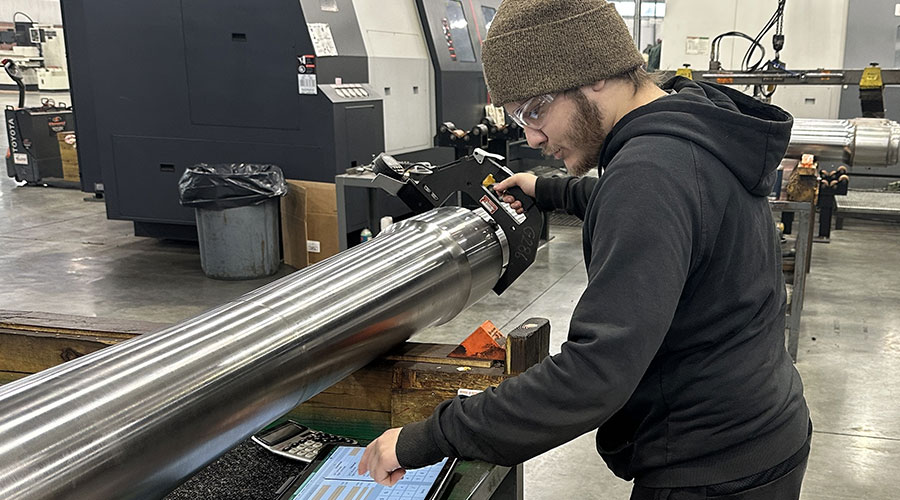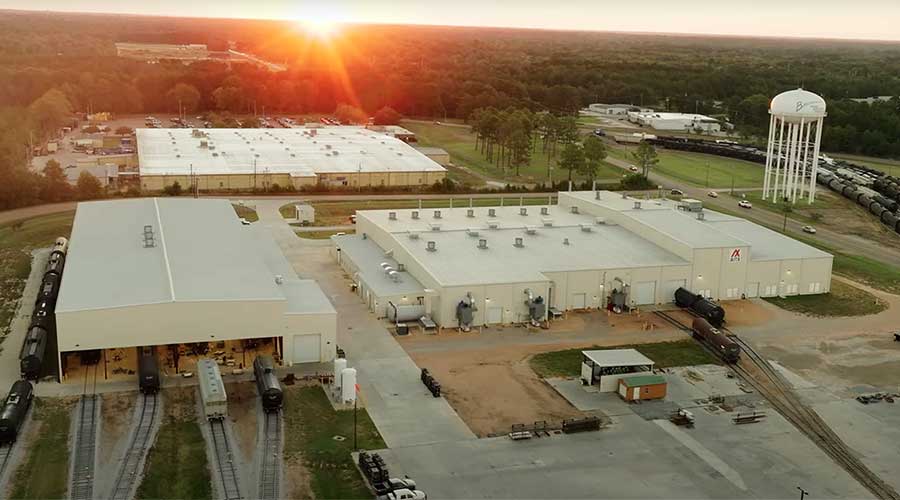Stay updated on news, articles and information for the rail industry
May 2014
Rail News: Mechanical
Rail technology: on-board locomotive monitoring
There are plenty of products, systems and software to help railroads monitor locomotive health, fuel use and performance. Here are on-board offerings from 10 technology providers.
ElectroMotive Diesel Inc.
ElectroMotive Diesel Inc. offers Intellitrain®, a fully integrated remote monitoring and asset tracking system that the company says "has a proven track record of significantly improving availability and reliability while decreasing maintenance costs." Intellitrain is available for any EM2000 based locomotive, EMD says.
Meanwhile, the Intellitrain website is undergoing a redesign, with the focus on delivering "value-added content and easy navigation," the company says. Primarily staffed by EMD engineers, the monitoring center is headquartered in LaGrange, Ill., and now offers 24/7 support. Locomotives are monitored daily for fault history and health; EMD creates custom alerts and reports. Troubleshooting documentation can be sent directly to the locomotive for access via the locomotive display screen.
EMD staff use millions of hours of locomotive run-time signals in the company's database to develop advanced condition monitoring rules and pattern recognition. Intellitrain can use dedicated cellular modems, Wi-Fi and customer-specific communication systems to move data to the EMD back office.
EMD continues to upgrade Intellitrain with products and services such as geofencing; the capacity to generate reports from products such as AESS and SmartConsistTM, and user-friendly graphing tools, the company says. The company also is automating the software upload process to push software updates through Intellitrain to the locomotive on-board systems.
GE Transportation
GE Transportation's RailConnect 360 Remote Monitoring & Diagnostics suite (RM&D) includes on-board and office solutions that manage and optimize the utilization, performance, movement, placement, maintenance and life-cycle of GE locomotives, according to the company. Designed to provide insight on locomotive health, prevent on-line failures and predict maintenance needs, the products utilize the company's Predix software platform, which enables asset and operations optimization by providing a standard way to run industrial-scale analytics.
RM&D monitors locomotive health, position and other critical factors in real time, providing customers with targeted repair recommendations as needed, along with customer-defined alerts around geofencing, fuel and more, the company says. Meanwhile, GE's on-site RailConnect Power Doctor provides over-the-road support, using live status and performance information, Global Positioning System (GPS) location, weather and geography data to "empower the help desk" in advising locomotive operators and transportation departments, GE says.
With the RM&D suite, "customers realize higher productivity and lower overhead by reducing over-the-road failures, optimizing locomotive assignment and planning, operating smarter and more efficient shops, and optimizing repairs," the company says. "They also gain real-time access to equipment health, and accurate forecasting of maintenance and parts."
IONX
The most recent addition to the IONX line of remote asset monitors is designed to help users increase fleet efficiency and safety, and to "assign accountability whenever necessary," the company says. Reliable and easy to use, the IONX On-board Vehicle Weighing System delivers automated data analysis in real time. IONX is a division of Amsted Rail®.
System features include a motion control bogie with integrated transducers for measuring the car's payload; and intrinsically safe wireless sensors and a communications manager for remote or local communications, which enables users to monitor loading/unloading in real time. The system provides payload accuracy up to 1 percent of load limit, and the ability to verify A-end versus B-end load imbalance, the company says.
The system enables users to avoid overweight penalties, optimize car capacity by filling to allowable outages or load limits, and ensure loaded cars are properly balanced. Recorded payload can be used for billing when certified, according to National Conference on Weights and Measures Publication 14, IONX says.
Lat-Lon L.L.C.
Lat-Lon L.L.C.'s Locomotive Monitoring Unit (LMU) provides a stream of location, speed and maintenance data viewable from any web-enabled computer or mobile device with the company's Apple and Droid apps. Combined with the Lat-Lon Start/Stop Controller, the LMU is a full automatic engine start/stop system with over-the-air programmable capability for rapid adjustments based on coolant temperature, engine activity, voltage, fuel and digital inputs, the company says.
With four analog and 12 digital inputs, the LMU can be customized to monitor brake pressure, traction motor current, throttle position, man-down and additional sensors. An optional digital wiring harness with a locomotive standard terminal strip "makes installation efficient," often taking less than three hours, the company says.
"This comprehensive visibility to operations and fuel usage helps determine efficiency, maintenance needs and optimal asset usage with an at-a-glance LMU dashboard," the company says. "[You can] monitor the critical systems of your locomotives to keep them in good condition and reduce maintenance costs."
GPS and engine voltage sensors are standard. Other sensor options are available to monitor automatic engine start/stop, traction motor current, fuel probe, impact, temperature, throttle position, oil level and more.
MotivePower Inc., a Wabtec Company
MotivePower Inc., a Wabtec company, offers the MotivePowerTM Central Diagnostics System (MPXCDS), which can help fleet managers improve on-time performance, reduce operating costs and increase revenue through productivity, enhanced security, proactive service management and preventative maintenance information, the company says.
The Internet portal enables authorized personnel to view locomotive status based on predetermined critical monitoring features. Once logged in, authorized personnel or MotivePower service representatives can access information critical to ensuring increased fleet availability.
Information that can be remotely viewed and accessed via the portal includes: locomotive status (active or inactive), location, condition of major systems, faults and fault resolution, and access to manuals, schematics and drawings. A "highly intuitive user interface" enables rapid implementation at various levels of operation, the company says.
Major systems feed fault data directly into the MPXCDS via serial or Ethernet protocol. The CDS then transmits data securely through the on-board modem directly to the server site.
New York Air Brake L.L.C.
Developed by New York Air Brake L.L.C.'s Train Dynamic Systems Division, LEADER® train management software is designed to calculate ideal propulsion and braking applications to optimize the use of power, brake force and fuel, making it possible for heavy-haul freight trains to haul more freight in less time, the company says.
Introduced in 1999, LEADER is deployed on more than 3,000 locomotives worldwide and has proven to deliver 6 percent to 8 percent fuel savings, depending on track topography and the makeup of the consist, the company says.
LEADER AutoControl® automatically controls throttle and dynamic brake while the locomotive driver uses an on-board display to monitor operations. Run-in and run-out forces are calculated on board in real-time, and are dynamically controlled to reduce slack action. LEADER also can control distributed power. "Over 125,000,000 miles and more than 800,000 trips, our system has never broken a train," says Train Dynamic Systems Division General Manager Bill Sturtz.
Railhead Corp.
Railhead Corp. offers on-board video systems for locomotives, cab cars and track vehicles. The company has more than 3,500 systems installed on Class Is, short lines, and light-rail and commuter-rail systems worldwide.
Soon, Railhead will release a high-definition IP system that supports up to eight cameras and delivers what the company terms as "the clearest video quality on the market." And, designed for locomotive use, Railhead's LDVR-HD is Mil-Spec, FRA and SAE rated for durability and reliability in harsh railroad environments. The company's LDVR-HD recorder is designed to provide "superior" video streaming capabilities, is wireless-ready and will integrate with crash-hardened memory modules and event recorders, the company says.
Railhead's "service-proven and scalable" software offers eight years of forward and backward compatibility, the company says. All video is encrypted to ensure authenticity and has a user-friendly Vehicle Information Back Office Software for fleet-wide management. Railhead also works OEM and aftermarket suppliers to integrate and factory install its systems. In addition, the company offers custom solutions.
Railserve
Earlier this year, Railserve rolled out a new remote-monitoring system for its LEAF Gen-Set® locomotives that provides real-time, mission-critical performance data to improve safety and operating efficiency. The company now uses Observe/Analyze/Respond™ (OAR) technology developed by Alternative Motive Power Systems (AMPS). OAR enables multiple users to track a range of operating data from remote locations.
OAR processes data from the AMPS Locomotive Control Unit on board each Railserve LEAF; the data then is transmitted via Wi-Fi or cellular systems to a web-based dashboard for locomotive status and performance monitoring by on-site plant managers or operations personnel at remote locations. Data compiled includes track speed violations; man-down alerts; hard couplings; throttle positions and forward/reverse settings; penalty applications; cab entry; and remote-control digital tracking. Additional OAR data can be used to improve switching productivity, reduce wheel slip and excessive idling, and provide low-temperature monitoring in cold weather, the company says.
The on-board LCU communicates with all technology on the Railserve LEAF, including power generators, traction control, throttle, reverser, brake and the three-axis accelerometer. Data fed to OAR can be displayed in various forms including plots, charts, indicators (red/green) and histograms.
Wi-Tronix L.L.C.
Wi-Tronix L.L.C. offers the Wireless Processing Unit (Wi-PU), an on-board platform for communications that the company says "provides the on-board foundation" for locomotive remote monitoring needs. The Wi-PU is in revenue service on Class Is, short lines and regional passenger railroads.
Wi-Tronix® enhanced overspeed monitoring also is available, which helps users track at-risk train handling behavior while triggering real-time notification at dispatch centers. Meanwhile, in-cab alerting is designed to increase "crew attentiveness and situational awareness," the company says.
A railroad's maximum authorized track speed, including slow orders and temporary speed restrictions, are sent to the on-board Wi-PU. The Wi-PU continuously evaluates speed restrictions against the locomotive's current location and speed; alerts are issued when an overspeed condition occurs. Any locomotive currently equipped with a Wi-PU can be updated to include optional in-cab audible alert functionality, the company says.
ZTR Control Systems
Available as an integrated option with the NEXSYS III-i control system or as a stand-alone option, remote monitoring solutions from ZTR Control Systems L.L.C. are available across North America and in the global markets ZTR serves. The solutions, which provide remote connectivity to locomotives, deliver critical information such as locomotive health, location, alerts (fault and diagnostic reporting), and are designed to streamline maintenance planning, fleet reporting and remote troubleshooting, according to the company.
The technology is secure, flexible and open, enabling railroads to choose where the data goes and how it's communicated, customer security levels and more, the company says. It allows for connectivity and communication with ZTR and non-ZTR equipment; it's also expandable (including LIG options), allowing connection with event recorders, fuel measurement and other devices, the company says.
Web services also are available that can tie into existing business software systems. Features include GPS mapping; GeoZone® — Fencing; alert management; reporting services such as the Near Me™ Smartphone App and SnapSite™ iPad App; third-party system integration; and ZTR remote support service.


 LRW Honors Amtrak’s Acheson As Railway Woman Of The Year
LRW Honors Amtrak’s Acheson As Railway Woman Of The Year
 From Editor-In-Chief Foran: Of Gender Equity And Inclusion
From Editor-In-Chief Foran: Of Gender Equity And Inclusion
 Spotlight On Some Of Today’s Rail Safety Products
Spotlight On Some Of Today’s Rail Safety Products
 Women of Influence in Rail eBook
Women of Influence in Rail eBook
 railPrime
railPrime








